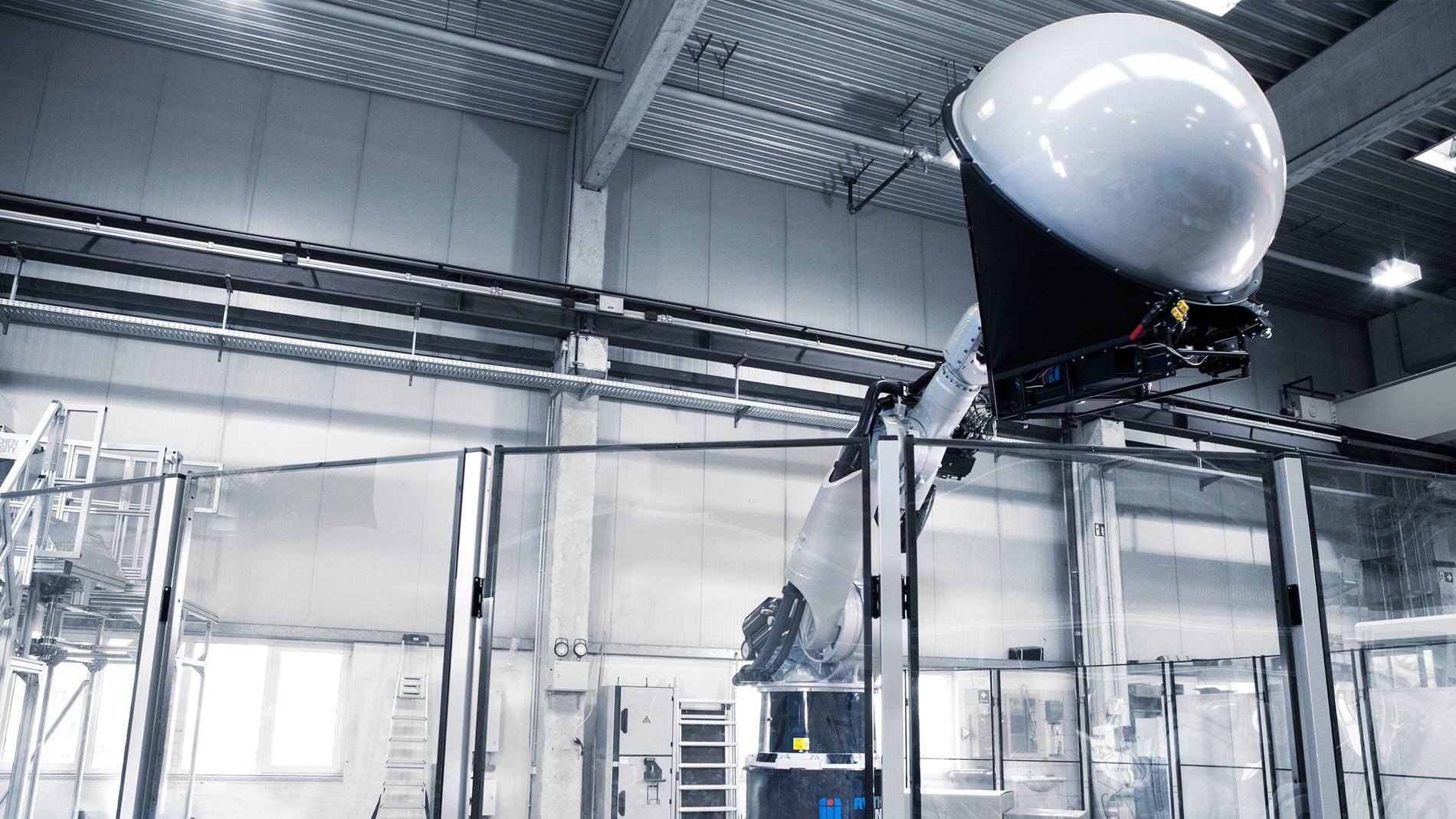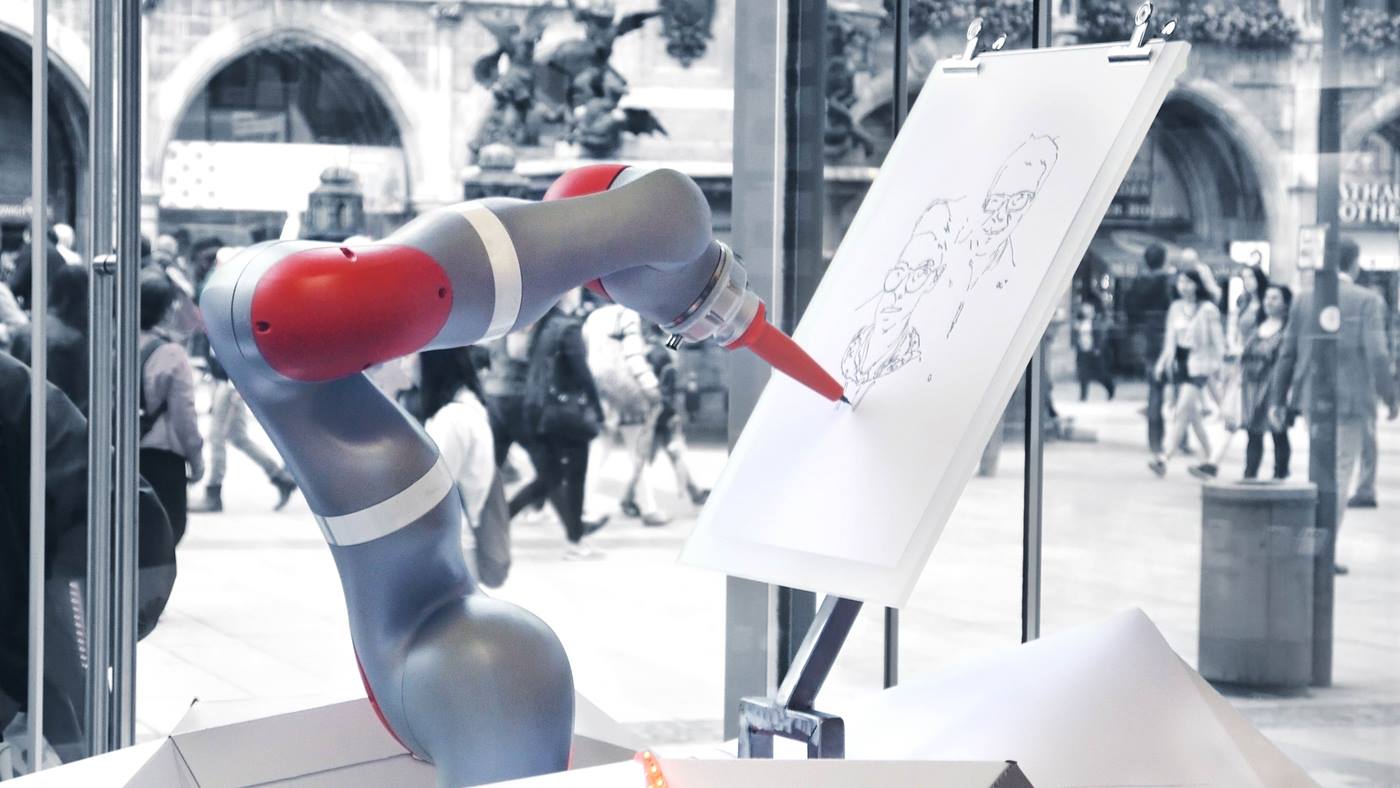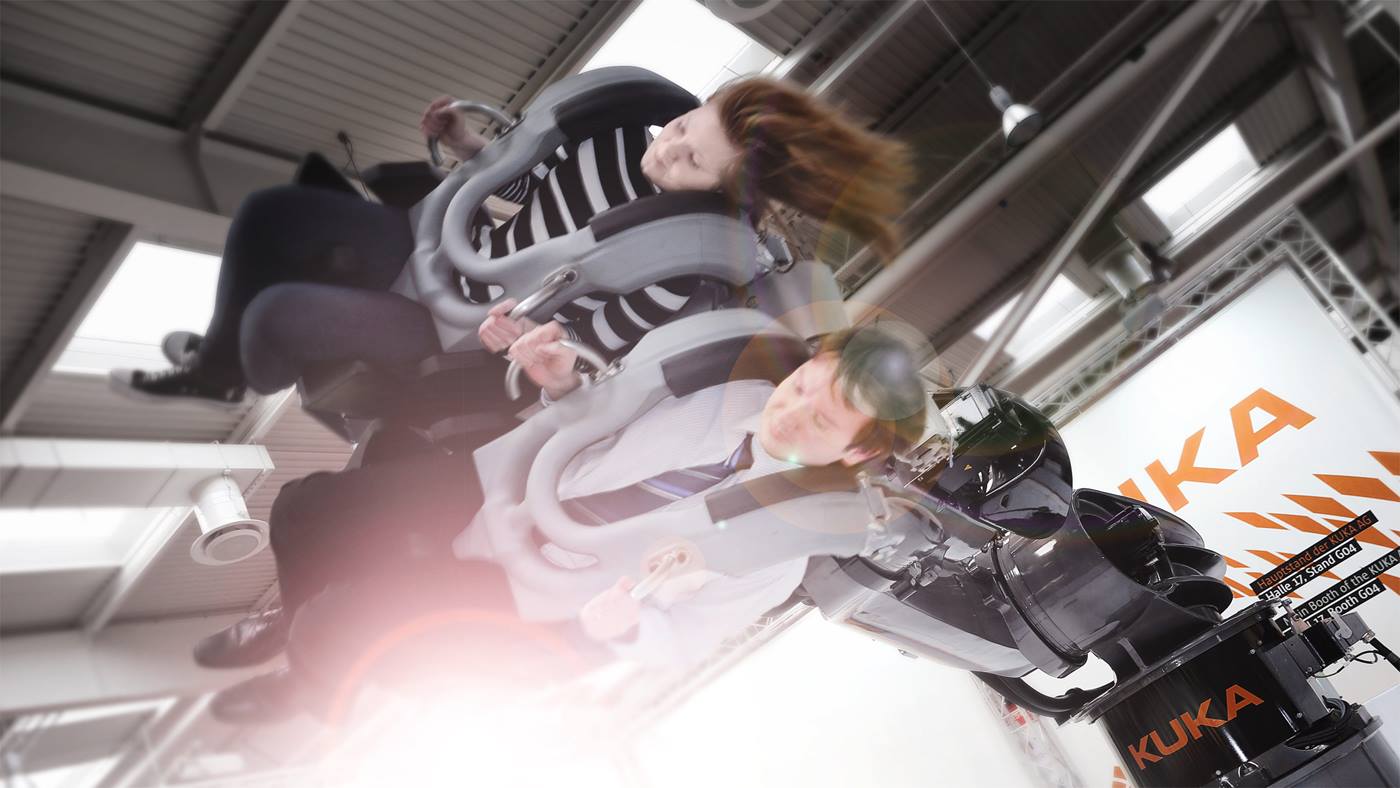The KUKA passenger robot in research and development institutions
A large work envelope, an open kinematic chain, individual customization, flexible supply of energy and fluids and intuitive operation of the controller are some of the plus points that make the KUKA passenger robot the first choice for research into the brain and sensory perception.
Where a hexapod (Stewart platform) is unsuitable due to its limited work envelope, the KUKA passenger robot is ideal. Due to the large range of motion of axis 1 and the infinitely rotating axes A4 and A6, the representation of motions and accelerations is greatly extended. Where conventional solutions are not sufficient, KUKA meets the rigorous requirements of the research institutions with special-purpose solutions.
Digital forestry with KUKA KR 500 TÜV
The times when the ax was the tool of choice in the forestry business have long gone. Also, the roar of the chainsaw is heard more and more rarely in Germany's forests managed under professional forestry operations.
When it comes to managing large areas of woodland nowadays, the harvester is the commonly used machine. The wheeled or tracked machine handles felling, stripping branches, cutting to length and setting the tree down according to assortments.
Training in the simulator
Since the turn of the 21st century, training forestry machinery operators in the simulator has been a standard procedure. A machine operator needs to learn how to move up to five crane axes in a synchronized and coordinated way so that the trees to be removed can be reached efficiently from the rear lane without damaging the neighboring trees.
At the same time, the operator needs to pay attention to driving without damaging the soil and preventing the vehicle's tires from damaging the trees along the rear lane. For this purpose, a KUKA KR 500 TÜV robot is supplemented by significant parts of a driver cab and stereoscopic projection. This system opens up new training possibilities.
A driver cab on the robot
The Institute for Man-Machine Interaction at RWTH Aachen University equipped the driver cab with all the necessary operator control elements and visualization components to enable the greatest possible degree of immersion. In addition to high-resolution 3D projection in the dome-shaped projection area, real touch screens and the typical control elements and pedals of a working machine were installed. A sound system provides a realistic audio backdrop.
The objective was to perfect haptic feedback for driver training. Using special software, the researchers managed to optimize the motion control of the robot to such an extent that it feels like the user is driving over woodland terrain. The whole solution is naturally based on a system that guarantees inherent safety for the passenger in every operating state and simulation scenario.



